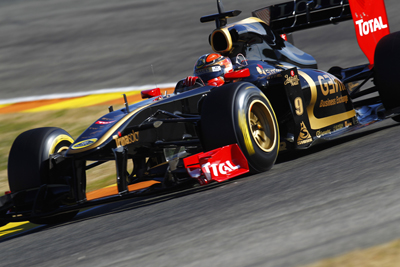
This will be the ninth consecutive season that Lotus Renault GP will use VISTAGY's FiberSIM composite design and engineering software.
Engineers at Lotus Renault GP (formerly Renault F1 Team) have used VISTAGY's services and FiberSIM software to reduce the time it takes to design and manufacture all of the team's composite parts – including the chassis, gearbox, roll hoops, side pods, wings and double diffuser floor – for the past eight seasons.
Optimised composite production
Lotus Renault GP and VISTAGY are working together to develop new technologies for optimising the composites product development process and improving the performance of the race cars. Lotus Renault GP is interested in more closely integrating its design and analysis functions. New features in FiberSIM 2010 link these two disciplines to enable more efficient transfer of composite design requirements to the engineering team. This promotes design optimisation by allowing for quicker and more frequent iterations, which ultimately delivers parts of the highest durability and lowest weight possible.
Expediting the production of the vehicle is critical because each season the Formula One teams are required to completely design, analyse, manufacture and test their cars in fewer than 180 days or risk stringent FIA penalties, or worse, the loss of an entire racing season. As a result, the teams constantly look for ways to reduce engineering cycle times and eliminate errors in design and manufacturing in order to refine the final products and meet all delivery deadlines.
"The free flow of information and expertise during the tenure of our technology partnership has significantly improved our race cars and the FiberSIM software," says James Allison, technical director at Lotus Renault GP. "This open exchange has enabled us to streamline our composites development process and optimise our composite parts, both critical to our efforts to meet our deadlines and put the best race car possible on the starting grid."
Lotus Renault GP is owned by Genii Capital, which acquired a majority shareholding last year.
VISTAGY Inc, headquartered in Waltham, Massachusetts, USA, is a global provider of industry-specific engineering software and services.
|
Chassis: Moulded carbon fibre and aluminium honeycomb composite monocoque, manufactured by Lotus Renault GP and designed for maximum strength with minimum weight. Front suspension: Carbon fibre top and bottom wishbones operate an inboard rocker via a pushrod system. This is connected to a torsion bar and damper units which are mounted inside the front of the monocoque. Aluminium uprights and OZ machined magnesium wheels. Rear suspension: Carbon fibre top and bottom wishbones with pull rod operated torsion springs and transverse-mounted damper units mounted in the top of the gearbox casing. Aluminium uprights and OZ machined magnesium wheels. Transmission: 7-speed semi-automatic titanium gearbox with reverse gear. 'Quickshift' system in operation to maximise speed of gearshifts. Fuel system: Kevlar-reinforced rubber fuel cell by ATL. Cooling system: Separate oil and water radiators located in the car’s sidepods and cooled using airflow from the car’s forward motion. Electrical: MES-Microsoft Standard Electronic Control Unit. Braking system: Carbon discs and pads. Calipers by AP Racing. Master cylinders by AP racing and Brembo. Cockpit: Removable driver’s seat made of anatomically formed carbon composite, with 6-point harness seat belt by OMP Racing. Steering wheel integrates gear change and clutch paddles, and rear wing adjuster. KERS: Motor generator unit driving into front of engine with batteries as an energy store. Motor Generator supplied by Renault Sport F1. Electronic control unit by Magneti-Marelli. |


